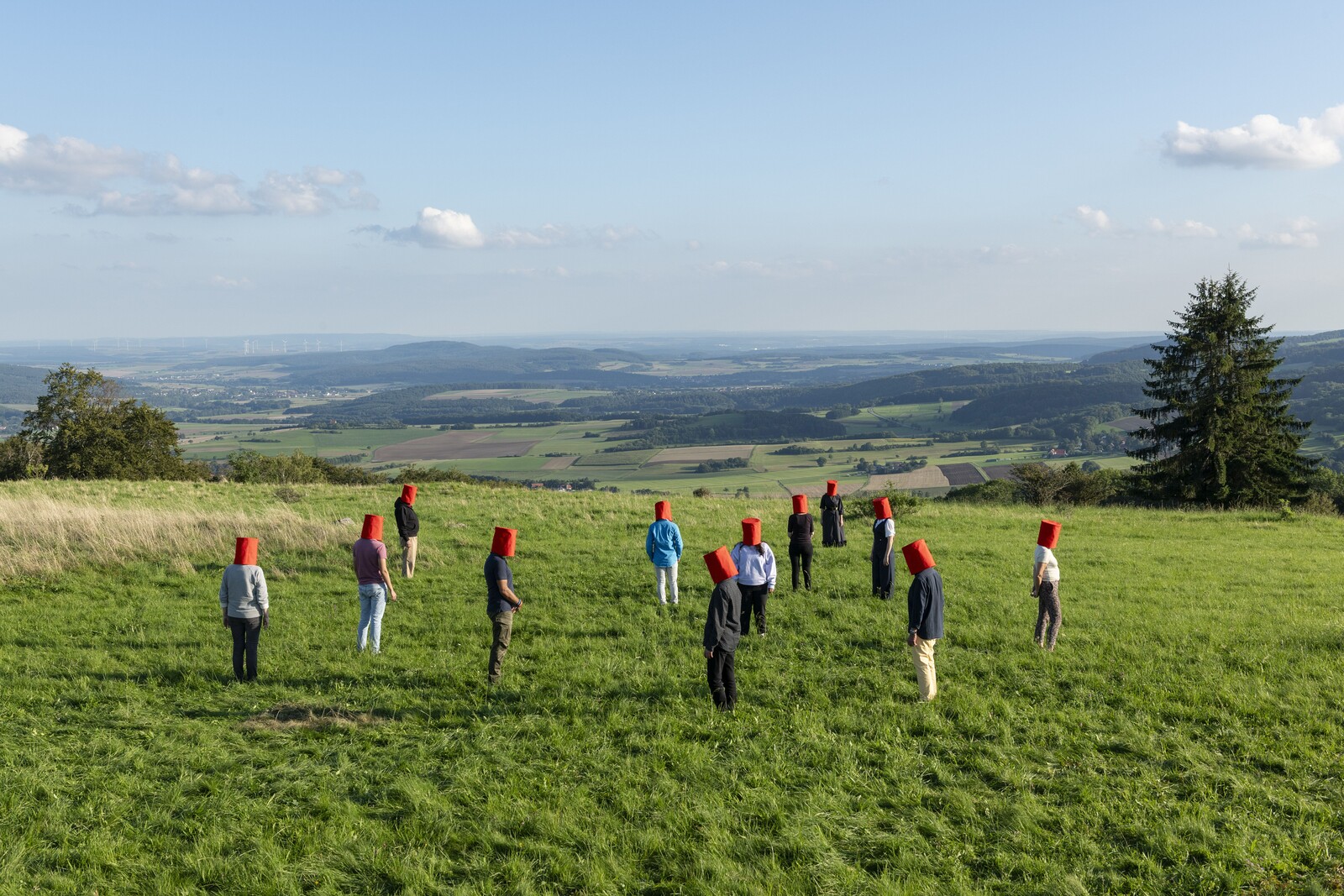Images in Mind, Bodies in Space
March 22–July 28, 2024
Helmut-Kohl-Allee 4
53113 Bonn
Germany
Hours: Tuesday–Sunday 10am–7pm,
Wednesday 10am–9pm
T +49 228 9171200
info@bundeskunsthalle.de
In the early 1960s—in the context of Minimalism and beyond the classical understanding of sculpture and painting—Franz Erhard Walther formulated a new concept of the work that included the viewer as an actor: His First Work Set (1963–1969), consisting of fifty-eight activatable elements, is legendary. With this, the artist concretised his understanding of sculpture, seeing the executed action as a “work form”: gestures and actions became an essential component of his works. During his tenure as a professor at the University of Fine Arts Hamburg, he became an influential teacher, and the art historical significance of his work is undisputed.
Even in his early work, the artist incorporated the processual and the uncertain as a design principle; during his time in Düsseldorf, experimentation and innovation played a major role. The Rhineland became an important place of study and work, as the exhibition and accompanying catalogue make clear with some previously unpublished documents. Since early 1963, he has been using fabric—a hitherto hardly used artistic material—for the production of almost all his activation objects. From 1966 onwards, Walther also established the “storage form”, which he had already tried out in 1962, to the works wrapped in fabric as an independent work status. With the Wall Formations he created from the end of the 1970s onwards, he achieved a unique interweaving of painting, sculpture, and architecture that continues to this day.
The exhibition presents a concentrated, representative selection of action-based works and drawings from different periods as an “interior view.” It is open and dialogue-based, showing Walther’s art as unfinished and corresponding with the imaginations and actions of the visitors—“images in mind” and subsequently “bodies in space” are created. Early works such as the Hand Pieces lead to the First Work Set, which are followed by Walking Panels, Spatial Elements, Wall Formations, the New Alphabet, and the Action Panels. A further speciality are the reconstructions of the Seven Work Songs—a room from 1964 at the Galerie Junge Kunst in Fulda—and the corresponding Space-Skinning BRICK TONE (Fulda Space) from 1997/98.
In the large activation area at the centre of the exhibition, visitors can use specially made exhibition copies—two structures provide an unusual view and perspective of this space. It demonstrates that Walther’s art is alive, accessible, rooted in the here and now, and, above all, democratic and non-hierarchical. No special prior knowledge is required to carry out the simple actions—his visual language transcends borders and is universally understandable.
Media art space on the lower floor
Parallel to the exhibition, a selection of videos of historic performances and demonstrations by artists whom Franz Erhard Walther got to know during his stay in New York (1967–1973), such as John Cage alongside others. Works by Merce Cunningham, Yvonne Rainer and Carolee Schneemann visualise the innovative expressive will of many artists of the time to incorporate body, movement, action, and space into a narrative.
Activations in the exhibition
The activation area offers the opportunity to activate twenty-four different exhibition copies of the First Work Set and of Action Paths by Franz Erhard Walther; the works can be picked up, put on, or placed over the visitor’s body. Through the interaction between body and object, everyone becomes part of the work. The performers create their own narratives, and the work is in a constant state of flux: work, body, place, and space merge in an unusual way to form a unity. A contact person will be on hand on Sundays from 12–6pm in using the Action Paths, while visitors can also activate the parts of the First Work Set on their own on weekdays. Especially for children, the Handling Book II will be offered as a guided activation.
Work activation
Some exhibits from the exhibition will be demonstrated by Franz Erhard Walther and/or Lehmann Walther on special dates:
May 1 at 3:00pm, May 29 at 5:30pm, June 26 at 5:30pm, July 21 at 5:30pm
The exhibition is a co-operation between the Bundeskunsthalle and the Franz Erhard Walther Foundation.
Bundeskunsthalle
The Art and Exhibition Hall of the Federal Republic of Germany
Director: Eva Kraus
Managing Director: Oliver Hölken
Press officer: Sven Bergmann, bergmann [at] bundeskunsthalle.de
Further current exhibitions
Anna Oppermann. A Retroperspective
Until April 1, 2024
Kengo Kuma. Onomatopoeia Architecture
Until September 1, 2024
For the upcoming programme, go to bundeskunsthalle.de.


